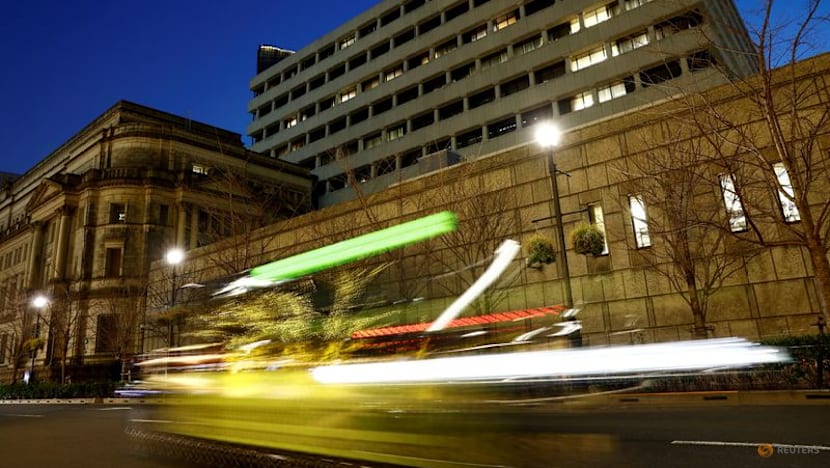BOJ set to keep rates steady, offer cautious optimism on outlook

FILE PHOTO: A general view of the Bank of Japan headquarters in the dusk in Tokyo, Japan January 23, 2025. REUTERS/Issei Kato/File Photo
TOKYO :The Bank of Japan is expected to keep interest rates steady next week and signal its cautious optimism the economy appears to be weathering the hit from U.S. tariffs, a message that may keep alive expectations of another hike in borrowing costs this year.
But Governor Kazuo Ueda is likely to warn of lingering uncertainty as tariffs work their way through the economy and, coupled with signs of weakness in the U.S. economy, cloud the outlook for Japan's export-reliant economy.
The BOJ's meeting will come days after that of the U.S. Federal Reserve, which looks set to kick off a series of interest rate cuts to shore up a fragile labour market.
At the two-day gathering ending on September 19, the BOJ is widely expected to keep interest rates steady at 0.5 per cent.
Markets are focusing on Ueda's post-meeting press briefing for hints on how soon the BOJ could resume rate hikes, paused since January as policymakers scrutinise the impact of tariffs.
Ueda may also comment on how soon the BOJ could decide on selling its holdings of exchange-traded funds (ETF), which is drawing increasing attention in the market.
"Ueda probably won't give clear hints on whether the BOJ could hike in October, as it wants to do more checks on how deep the tariff impact could be," said Naomi Muguruma, chief bond strategist at Mitsubishi UFJ Morgan Stanley Securities.
"Signs of weakness in the U.S. economy could also affect the BOJ's rate-hike timing," said Muguruma, who expects the bank to next raise rates in January.
A Reuters poll showed a majority of economists expect another 25-basis-point hike by year-end. But those surveyed were split on the timing with bets centering on October and January.
With Tokyo having signed a trade deal with Washington, BOJ policymakers are becoming increasingly confident the impact of tariffs - while significant - won't push Japan into recession, say sources familiar with its thinking.
But Deputy Governor Ryozo Himino has warned the hit from tariffs will begin to intensify, suggesting the BOJ's preference to scrutinise more data before pulling the trigger.
Key would be the BOJ's "tankan" quarterly business survey due on October 3 that will offer clues on whether companies can withstand the tariff hit and keep hiking wages, analysts say.
Recent weak U.S. jobs data are also emerging as a source of concern for BOJ policymakers, as any downturn in U.S. growth could derail their forecast of a recovery in Japan's economy.
The diverging policy path of the Fed and BOJ could cause sharp rises in the yen that would hit Japan's exporters already seen feeling the pinch from U.S. tariffs.
Some analysts see political uncertainty, caused by Prime Minister Shigeru Ishiba's decision to step down, as another factor that may discourage the BOJ from hiking rates soon.
But holding fire for too long could leave the BOJ behind the curve in addressing the risk of too-high inflation, particularly with its real interest rates remaining deeply negative.
While the BOJ expects rises in food prices to moderate due to the base effect of last year's surge, stubbornly high costs of living could lead to prolonged, broad-based inflation.
"If upward inflation risks heighten, the BOJ may need to act decisively as a guardian of price stability," hawkish board member Naoki Tamura told a news conference in late June.
Ueda is likely to reiterate the BOJ's resolve to continue raising interest rates if it becomes more convinced the economy is making progress in durably achieving its 2 per cent inflation target.













